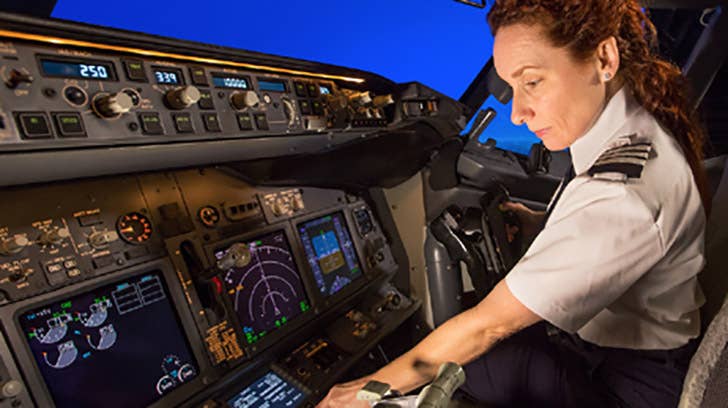
Boeing’s forecast calls for a doubling of the workforce size over the next 20 years. Boeing
The Boeing Company’s outlook for hundreds of thousands of pilots and maintenance technicians worldwide considered demand over the next 20 years. These days, many see forecast numbers like these as one more indication of how much work the industry has ahead in order to attract enough new people to balance the manpower deficit staring aviation in the face. Boeing’s vice president of business and general aviation William Ampofo, told an AirVenture audience Monday morning that adding to aviation’s problems is that, “Everyone’s pulling people from the same pool.” The key he said is to expand that pool.
In hard numbers, Boeing believes the marketplace will need 635,000 airline pilots for fixed-wing aircraft by 2037. With only 295,000 active pilots worldwide today, that translates into a doubling of the workforce in the next two decades. Those requirements break down into 240,000 in the Asia/Pacific region, 127,000 in North America, 118,000 in Europe, 60,000 in the Middle East, 43,000 in Latin America and 24,000 in Africa. Around the globe, business aviation will also demand tens of thousands of pilots, 96,000 to be exact, during this same 20-year period. North America will need 59,000 of those cockpit crewmembers, while in Europe, the demand is expected to reach 16,000 pilots. Latin America needs 8,000 pilots, Asia/Pacific 7,000, Africa 3,000 and the Middle East 2,000.
Boeing said North America will also need 20,000 helicopter pilots followed by 14,000 in the Asia/Pacific region, 12,000 in Europe, 6,000 in Latin America and 2,000 in the Middle East. When the topic turns to maintenance technicians, the forecast calls for 635,000 on the commercial aviation side, 89,000 in business aviation and 43,000 for the helicopter industry. Cabin crew are also in short supply, with the airlines worldwide in need of approximately 858,000 people while business aviation will require another 32,000.
Fueling the need for additional personnel are record airline profits that translate into the need for more than 14,000 new airplanes valued at more than 6 trillion dollars. Boeing says 56 percent of the new aircraft will be dedicated to route expansion, while the other 44 percent will replace older birds.
Boeing is also studying the cost to prepare young people for the future. While training costs for many positions were often absorbed by the airlines, according to Boeing, that cost has been transferred to the student population. A 2013 change to Part 121 that demands all airline pilots hold an ATP certificate has also significantly increased the cost to attain that certificate. While business aviation spends enormous amounts of money to maintain pilot proficiency, most Part 91 operators do not demand an ATP in order to extend a job offer. All of these industry ‘problems” have, of course, translated into good news for new hires with salaries and benefits on the rise.

Sign-up for newsletters & special offers!
Get the latest FLYING stories & special offers delivered directly to your inbox






